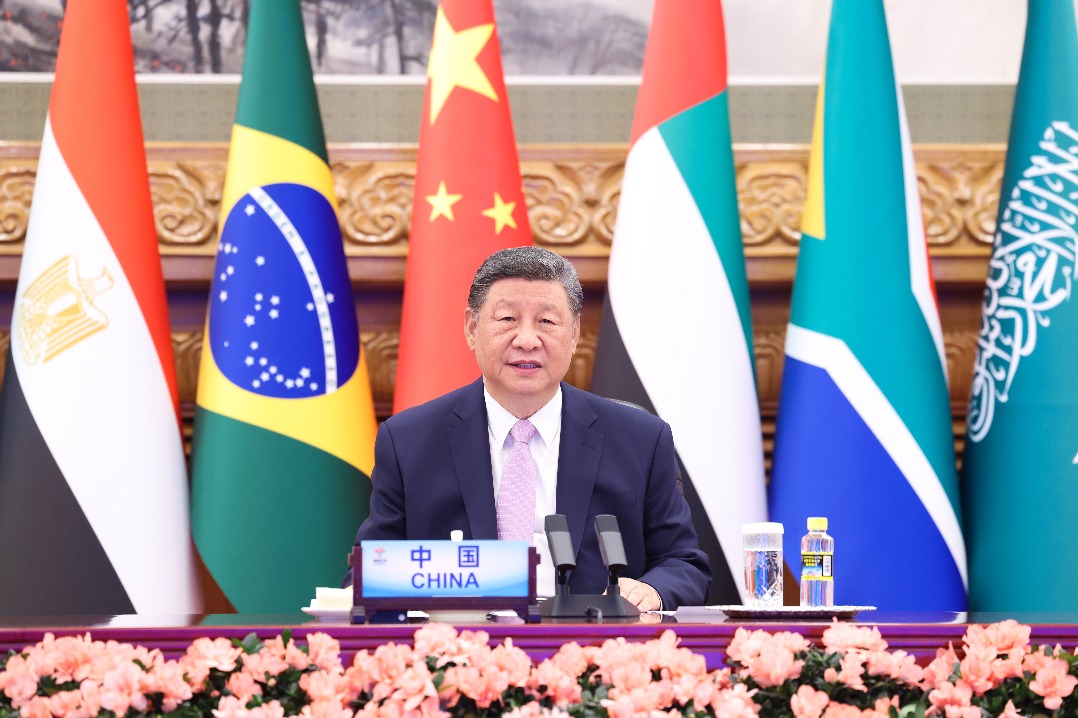Three-kid families might boost biz of some services

Who or what might prove "unintended beneficiaries"-call this new phrase an antonym of "collateral damage", if you will-of China's new policies aimed at raising the fertility rate?
Well, there could be several beneficiaries, to be sure. For one, the residential property sector could see large families making a dash for four- or five-bedroom apartments. For another, such families may also seek to buy seven-seat passenger vehicles.
That's not all. Large family-themed hospitality and leisure services, which have long been uncommon choices for consumers, may find new growth points in many parts of the country in the coming years.
Mind you, such trends are in the realm of possibility, and might take a while to materialize, initially on a limited scale. But whenever they do-here, I'm willing to bet big on them coming to pass-it will likely reshape China's economic layout at the regional level in the long run.
This might be particularly true of counties, as well as small and medium-sized cities, where costs of living and fertility tend to be lower than those of major cities.
China's third-child policy is expected to offset any possible impact of the aging population on economic growth and dynamism in society.
It will also likely further promote the country's ongoing supply-side structural reform and consumption upgrade, particularly in small and medium-sized cities like Chaozhou and Shantou in Guangdong province, and certain parts in the Ningxia Hui autonomous region and the Xinjiang Uygur autonomous region. In such areas, people still have a strong willingness to raise large families, according to the government's latest national census data.
Of course, all this is going to be fairly time-consuming and costly for all the parties concerned, including families, the governments, related businesses and service providers like banks, insurers, hospitals and educational institutions. Nevertheless, they will all likely invest and become heavily involved in this endeavor.
Judging from past experiences in Japan, the Republic of Korea, and the former Soviet Union in the 1970s led by Leonid Brezhnev, such measures were taken only after their economic growth hit a bottleneck.
However, their supporting policies were not effective enough to boost their populations, resulting in vast aging groups and shrinking working-age groups.
To prevent potential risks and make early preparations, China carefully studied other countries' experiences and drew lessons. The Chinese authorities formulated a number of policies, and these measures will be further fine-tuned to match the ground reality.
Experts opined that a public service system covering child and elderly care can ensure everything will go smoothly. They also stress a need to improve infant care services. Even though the government has issued many guidelines and standards for child care services, more families would benefit if policymakers integrate child care services for children in the 0-3 age group into the public service system, they said.
Improvements to public kindergartens and higher investments in child care and preschool education will help lower the costs of raising children and therefore encourage more couples to have two or three children.
In addition to further upgrading China's industrial structure and improving the service quality of its educational sector, a fertility-friendly social and cultural environment should be created for couples willing to have three children.
For instance, employers should make sure that female employees who choose to have a child are not discriminated against at the workplace.
While China is offering greater access for global businesses to its services sector, there is still more room for the country to better open its home services market to overseas workers, since the cost of nannies in the Chinese mainland is much more expensive than that of Hong Kong and Singapore.
To help Chinese families with three children cut the cost of living, opening up of this niche market to workers from economies such as the Philippines, Indonesia and other Southeast Asian countries may become necessary during the post-COVID-19 era.
Today's Top News
- Defense leaders from over 100 countries to attend Xiangshan Forum
- China honors model teachers in celebration of Teachers' Day
- Xi sends congratulatory letter to 2025 China Intl Fair for Trade in Services
- China set to revise Foreign Trade Law to address challenges
- Xi's BRICS speech charts path forward
- Xi congratulates Kim on DPRK's 77th anniversary






























